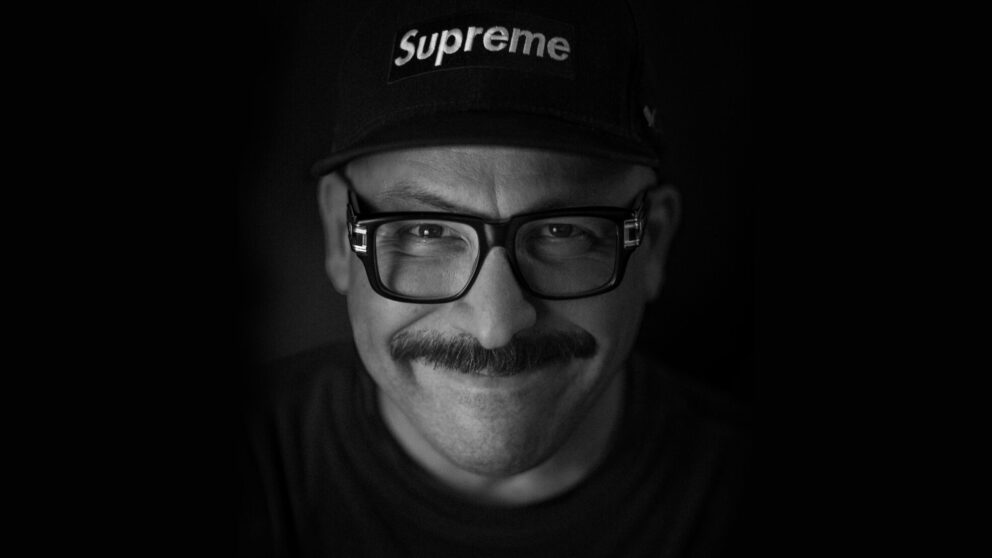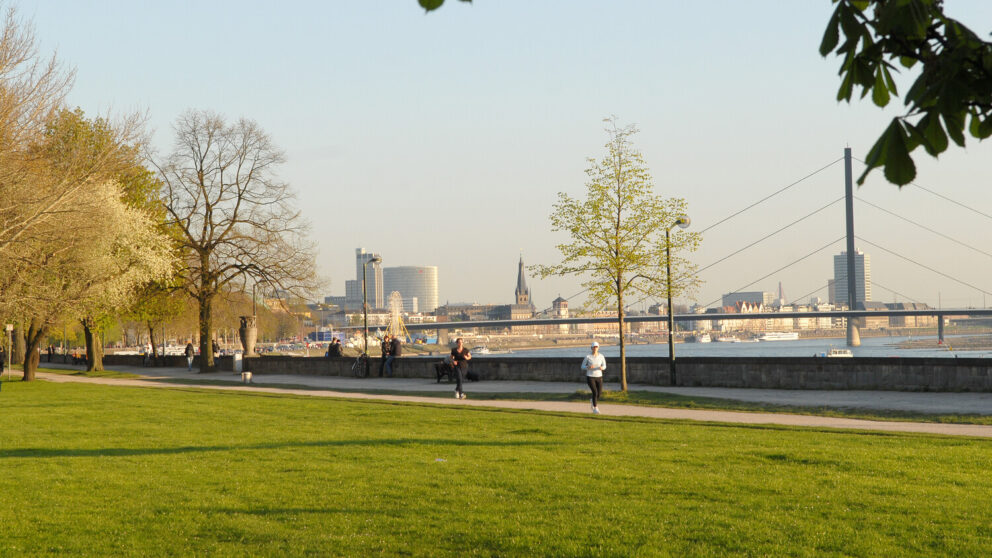
The six urban artists making the Wonderwalls exhibition a must-see
The six urban artists making the Wonderwalls exhibition a must-see
From Banksy to JR
The autumn exhibition season starts with a bang as urban art takes centre stage in an exhibition at NRW-Forum for the first time. ‘Wonderwalls. Art & Toys’ brings together the scene’s big hitters, but what makes it really remarkable is that all 2,000 exhibits belong to the collection of one man, Selim Varol. The Düsseldorf-based entrepreneur and restaurateur has been collecting urban art and designer toys for over 30 years. His collection includes more than 10,000 pieces, making it one of the largest in Europe. As the exhibition’s name indicates, the focus of Wonderwalls is mainly on the best of street art. And that makes perfect sense, as this counterculture and the artists’ subversive interventions in public spaces opened the door to many other varieties of urban art, be it cover artwork or sculpture inspired by pop culture. If you like stencils, paste-ups and vinyl toys, have always wanted to explore the early days of hip-hop or are part of the skateboard and graffiti scene yourself, then you simply have to see these six urban artists in Wonderwalls.
The exhibition runs from September 30, 2022 to February 5, 2023.
Banksy
A pseudonym that conceals a cynical mind and plenty of dark humour, Banksy is probably the best-known unknown of the urban art scene, perhaps even of all contemporary art. He is one of the street art pioneers who often took significant risks with their illegal activities and therefore preferred to remain anonymous. Banksy’s stencil graffiti has long been part of contemporary art and pop culture, and today enjoys global acclaim whenever it appears out of nowhere in a public space. A Banksy can fetch millions at auction, and yet the artist behind it has lost none of his credibility. He makes no secret of his politics and his criticism of consumerism, and he always has a surprise up his sleeve. Just think of ‘Girl with Balloon’, which was recently auctioned at Sotheby’s for over €1 million, only to be cut into pieces by a shredder built into the frame. Completely intact and on show at NRW-Forum is, among others, Banksy’s ‘Trolley Hunters’, which depicts a primitive hunting scene featuring three shopping trolleys.
JR
Another star of the scene, and this is not the first time that the work of the French photographer and street artist JR has featured here. In April 2022, over 100 Düsseldorf residents rolled out a huge portrait of five-year-old Valeriia happily skipping about in Poland, where she had fled to. A statement of solidarity with Ukraine created by JR, and one that demonstrates his approach of giving people a voice through his large-format artworks. They usually feature close-ups of faces, and their often oversized format can dominate cityscapes and landscapes alike. JR specialises in a spectacular mix of photography and urban art. ‘Portrait d’une génération’ is the title of a series that you can explore during the Wonderwalls exhibition. In the series, JR deals with juvenile crime in the banlieues, the places where he himself grew up. People were also able to become a piece of his art themselves. As part of his global ‘Inside Out’ project, participants had their picture taken in JR’s photo truck, which was parked outside NRW-Forum in September 2022. The photos were then put on display around the NRW-Forum, and you could have joined the more than 400,000 people from 138 countries who have been portrayed for ‘Inside Out’ since its launch in 2011.
Martha Cooper
If you’re interested in the origins of hip-hop, then Martha Cooper’s work should be your first port of call. New York, 1980. A new subculture is about to take the streets of the Bronx by storm: b-boying and, a little later, b-girling. Martha Cooper is widely regarded as the first person to capture this phenomenon, generally known as breakdancing, on camera. The American photojournalist is also known for documenting graffiti art, which is inextricably linked to hip-hop culture. Her book Subway Art, which she published with fellow photographer Henry Chalfant in 1984, is a milestone in written documentaries and has become known as the graffiti bible. Generations of graffiti artists have based their style on it. How come? It’s probably down to the authenticity and appreciation with which Cooper approached graffiti, which in its infancy was still widely criminalised and considered vandalism. Through her photos, she portrayed hip-hop as an attitude and lifestyle which, over the decades, evolved from a counterculture into the world’s leading pop-culture art movement.
Os Gêmeos
Os Gêmeos, Portuguese for ‘The twins’, are Otávio and Gustavo Pandolfo. They hail from São Paulo, where they created their first graffiti back in 1987. What sets them apart is that they didn’t use spray cans, as those were too expensive. Instead, they relied on brushes, rollers and affordable exterior paint. And they still do today. And if you know all this already, then you might be familiar with their colourful mural in Düsseldorf’s Oberbilker Allee. In 2018, the pair created one of their surrealistic murals here on the facade of the AWO youth counselling service. It depicts in great detail a man with an oversized, yellow-tinted face and thin limbs, a hallmark of Os Gêmeos. The twins are now among the world’s best-known mural artists thanks to their unique imagery that combines influences from hip-hop with Brazilian folk art. Mythology meets activism, poetry meets a critique of the world we live in – simply unmissable.
Shepard Fairey
We bet that you also know Shepard Fairey, even if the name doesn’t immediately ring a bell. His iconic work ‘HOPE’, a series of posters for Barack Obama’s 2008 presidential campaign, is now forever part of our collective memory. You may also be familiar with OBEY, the legendary streetwear brand founded by the activist, graphic artist and illustrator in 2001. OBEY has become a cult brand thanks to its cryptic slogans that reveal themselves to be propaganda, and its many collaborations with icons from skate culture and pop culture. Fairey’s fashion brand walks the thin line between (conscious) consumption and anti-consumerism, and between art and pop. It comes as little surprise that the man who started out painting designs on skateboards has also made a name for himself as an expert in guerrilla marketing. It matches the idea of reclaiming public spaces that have been increasingly occupied by advertising, and changing the message to one that calls on society to take a long, hard look at itself. The Wonderwalls exhibition will feature over 250 prints by the American artist.
Stefan Marx
Two continents, one embryonic creative process: like Shepard Fairey, Berlin-based Stefan Marx chose skateboards as some of his first canvasses. Further into his career, he would also create designs for a fashion label and even album covers. For example, for Smallville Records in Hamburg, where Marx still contributes the occasional artwork for vinyl releases. The artist has a particular sense of humour, and his drawings and paintings feature a rare sense of irony. Marx celebrates DIY and the imperfect, and never more so than when he takes quotes from songs and general conversations and reimagines them visually. Particularly eye-catching is the (supposed) contrast between the often minimalist aesthetic of his works and the objects that they are created on. Examples include a range by KPM Royal Porcelain Manufactory Berlin and luxury carpets by Jan Kath. He appears unwilling to allow himself to be pigeon-holed, and his only duty seems to be to himself. Two years ago, Marx wrote the words ‘I woke up on a sofa a few weeks later’ on a wall in the foyer of Düsseldorf’s Kunsthalle art gallery. What could he be alluding to?
Cover: Photo: TOYGIANTS - 'Kaws Family', 2006, Courtesy Collection Selim Varol




